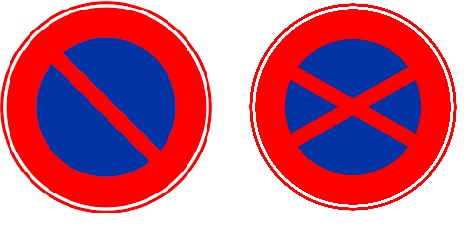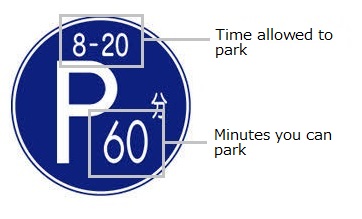
photo by Troy Simpson
When you go out for a drive, the first thing you concern may be what to do with a car park. If there is a parking at your destination, that is no problem. But there is no guarantee that every place you drop by has a parking space. If you can’t find a car park at your destination place, you will have to find somewhere else to park your car. Is there street parking on Japanese roads at all, and if so where? Also, where else can you park your car when there is no street parking?
Public car parks in Japan
Same as many other countries, shopping malls, most of public facilities and some of shops in Japan have their own parking lot for customers or visitors. There are not so many paid parking buildings but a few are available. When you drive to a shop, communal facility or other place which has no parking, you will need to park on a street in the neighborhood. In such a case, make sure to check a road sign if parking is permitted at the spot. No parking is allowed if the following signs are present.

Also, free parking on a street over 12 hours during the daytime or 8 hours during the nighttime are prohibited as well as parking on the same street repeatedly as an alternative of a garage. In addition, streets and sideways in urban areas of Japan are rather narrow and most of them are no parking streets. Therefore, drivers often use other parking facilities as explained the following sections.
Parking meters

Street parking meters are commonly used in many countries. Parking areas are indicated by the sign shown above or similar. Parking meters are more common in urban areas, normally located on one side of a street. To use a street parking meter, you firstly need to park your car within a space outlined with white lines, then insert required amount of coins to the parking meter to print a docket. Place the docket on the dashboard where clearly visible from the outside of the vehicle, then walk off after locking the car. The most common rate is 300yen per hour. Timeslot and maximum length of time for parking are indicated on the street sign. Recently, Tokyo city has started replacing old parking meters with new machines with English instructions that allow credit card payment.
※Metered street parking cannot be used beyond the length of time indicated on the street sign. If you want to keep parking after the time printed on the docket, you must pay for another docket.
Coin parking
Even though there are many metered parking spaces on streets in Japanese cities, finding an empty space especially in a big city. Also, once you turn the corner into sideways, no parking signs are everywhere. In such an occasion, what can be the best occasion is small parking lots so called “coin Parking” which can be seen everywhere in Japan. How to use the parking lot may vary each time. You may need to take a parking docket at the gate and pay at the exit by using a pay machine, or record a parking space number in a machine when enter and pay for the number on the same machine when exit. Most of coin parking have wheel locks that flip up when cars are parked and flip down once paid for exit. Costs are different by areas but normally only a few hundred yen.
Automated parking garages
These robotic parking garages are commonly seen in any city of Japan. Some garages utilize the entire buildings just for automated garages and others can be a part of large department store or shopping complex. This type of car park typically fits a country like Japan that has small land area. To use an automated parking garage, park your car in front of the garage door and proceed onto the platform inside the garage once the door rolls open, then stop the car and get outside. Once you get safely out of the garage, your car is automatically sent to the upper level. Your car will be sent back to the garage entrance when you get it discharged. You may need to receive a ticket at the entry and pay at a pay machine at the way out, or a garage staff may operate the garage for you from ticket printing to discharge of the car.
※Make sure to close the door mirrors before you get out of the garage.
※Make sure not to leave what you need to bring as it normally takes for a while to get your car discharged once it is sent away.
Find the right spot!
Japan is such a small country with limited spaces. In fact, it is not that hard to find a parking spot if you are in a suburban area. But in a city, there hardly are free parking spaces then you are more than likely to end up to use a paid parking space. Fortunately, parking fees are not that expensive in Japan, a few hundred yen per hour most of the time. If you can’t find a free parking spot, straight go to a paid parking as parking fines in Japan are very expensive.
Related Article:
Three options for foreigners to drive a motor vehicle in Japan
Check before driving! Traffic offences in Japan
Driver license: Procedures to update residential address when moving house
Driving tips in Japan: Gas Stations
Driving tips in Japan: General roads
Driving tips in Japan: Toll roads
Driving tips in Japan: Car accident
Driving tips in Japan: Traffic ticket
Unlimited use of expressways! Japan Expressway Pass for foreign tourists
Touring Japan by car: Rental-car guide for tourists
Best for driving trip! Regional expressway passes
Stuck on the road? Call JAF for roadside assistance
If you are buying a car in Japan: Guide to Japanese car insurance
What are insured? Check this before hiring a car in Japan
Japanese people no longer into owning cars? Car sharing in Japan
BRRR-lliant holiday in Japan! Rental motor bike
Comfortable camping in winter! Renting campervan in Japan
Get first driver license in Japan! Driving lessons in English
Selling a car? Get your car transported
